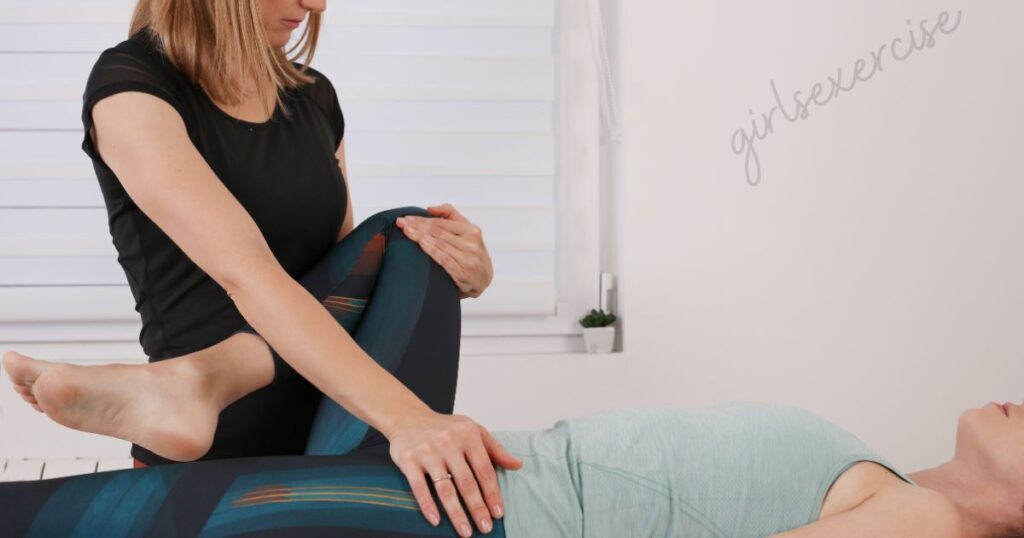During pregnancy, engaging in Kegel exercises is essential for maintaining pelvic health. These discrete and gentle exercises strengthen the pelvic floor muscles, aiding in better bladder control, reducing the risk of incontinence, and facilitating smoother labor and postpartum recovery.
Incorporating Kegel exercises into your routine can enhance overall well-being and comfort during this special time. Gain the knowledge of Kegel exercises during pregnancy. Learn how these simple yet effective workouts can affect your inner world. Say goodbye to every discomfort you feel and get ready for a smoother pregnancy journey!
Locating Your Pelvic Floor Muscles:

Your remarkable pelvic floor muscles cradle and provide vital support to your pelvic organs – the womb, bowel, and bladder. We often underestimate the importance of these muscles, but they play a significant role in our well-being.
When these muscles weaken, it can lead to situations where you may unintentionally release urine while coughing or sneezing, which is referred to as stress incontinence.
The good news is that regular pelvic floor exercises can be your shield against this discomfort. Embarking on the journey of pelvic floor exercises is not exclusive to any particular life stage.
Whether you’re contemplating pregnancy, currently expecting, or navigating the post-pregnancy period, these exercises are a valuable asset.
It’s a common misconception that pelvic floor exercises are solely essential for individuals undergoing vaginal childbirth.
It’s important to recognize that even with a cesarean section, your pelvic floor can experience strain. The truth is, regardless of your birthing method, everyone can reap the benefits of incorporating pelvic floor exercises into their routine.
These exercises are not limited to specific circumstances; they are universally advantageous for safeguarding your pelvic health and overall well-being.
Discovering Your Pelvic Floor Muscles:
Locating your pelvic floor muscles can be as simple as visiting the bathroom. The next time you find yourself on the toilet, here’s a gentle way to identify these important muscles.
As you begin to urinate, attempt to momentarily halt the flow. The muscles you engage to achieve this pause are none other than your pelvic floor muscles.
This exercise should only be done once to help you recognize the right muscles without any strain. It’s crucial to understand that repeatedly interrupting urination is not advisable, as it may increase the risk of a urinary tract infection (UTI) and potentially harm your bladder health.
By becoming familiar with your pelvic floor muscles in this non-invasive manner, you can confidently embark on your journey to strengthen and care for them.
These muscles play a significant role in your well-being, so understanding how to identify and engage them correctly is a valuable step toward a healthier and more comfortable life.
Strengthening Your Pelvic Floor Muscles:

Enhancing the strength and resilience of your pelvic floor muscles is an essential aspect of maintaining your overall well-being.
Here’s a comprehensive guide on how to perform these exercises effectively, improving your pelvic health in a friendly and comfortable manner.
Begin by visualizing three specific scenarios to understand how to engage your pelvic floor muscles. Imagine you’re stopping a bowel movement, holding a tampon securely in your vagina, or halting the flow of urine. These mental cues can help you isolate and engage the right muscles.
Perform a set of quick contractions and relaxations of your pelvic floor muscles, repeating this eight times. This will help you activate and become familiar with these muscles.
Next, switch to a slower routine, squeezing your pelvic floor muscles for as long as you comfortably can before gradually releasing them.
As you become more adept, challenge yourself by counting to ten before releasing. Remember to maintain your regular breathing pattern throughout the exercises for a relaxed and effective session.
Consistency is key in building pelvic floor strength. Aim to complete three sets of these exercises daily. To help you remember, consider incorporating them into your daily routine, such as while waiting for the bus, preparing a meal, or waiting for the kettle to boil.
This way, you can seamlessly integrate pelvic floor exercises into your daily life, making them a natural part of your routine.
You may discover that consciously tightening your pelvic floor muscles just before sneezing or coughing can provide added support, further aiding in the protection of your pelvic health and overall comfort.
By making these exercises a regular practice, you’re taking proactive steps to ensure a healthier, more confident you.
Adding Enjoyment To Your Kegel Exercises:

Making Kegel exercises a more enjoyable and integral part of your daily routine can be achieved with creativity and convenience. Here’s how you can infuse fun and motivation into these exercises while prioritizing your pelvic health.
For couples, incorporating Kegels into your intimate moments can not only enhance your bond but also elevate pleasure. Engaging in Kegel exercises during sex can be a delightful experience, intensifying enjoyment for both you and your partner.
To ensure you’re targeting the right muscles, your partner can gently use their clean fingers for guidance, creating a harmonious and pleasurable connection.
If you prefer to make Kegels a personal endeavor, modern technology offers a helping hand. Smartphone apps designed for Kegel exercises are readily available, offering daily reminders, tracking exercise routines, and even accompanying your workouts with musical routines.
These apps transform your pelvic floor exercises into an interactive and engaging experience, motivating you to maintain consistency.
Another avenue to explore is the use of specialized vaginal exercises. These devices are designed to aid in isolating and strengthening your pelvic floor muscles.
Some are cone-shaped and are secured within your vagina through your muscle contractions, allowing for discreet and effective exercise.
It’s important to exercise caution, as certain devices provide electrical stimulation to your muscles. Before using them, it’s advisable to consult with your healthcare provider, especially if you’re pregnant or recovering from childbirth.
It’s essential to prioritize your safety and well-being when considering these options.
By infusing enjoyment into your Kegel exercises, you not only nurture your pelvic health but also create a more pleasurable and fulfilling self-care routine.
These strategies make it easier to stay committed to your exercises, ensuring you experience the numerous benefits they offer while embracing a journey of well-being and intimacy.
Reinforcing The Pelvic Floor Post-Delivery:

Embracing pelvic floor exercises as part of your postpartum journey can significantly contribute to your recovery and overall well-being.
These exercises serve various purposes, from promoting perineal healing to addressing postpartum incontinence and managing pelvic floor disorders, making them an invaluable resource during this phase of your life.
Pelvic floor exercises have shown promise in treating prolapse, a condition characterized by the descent of pelvic organs such as the uterus, bladder, or rectum into the vaginal area.
These exercises can help alleviate discomfort and offer relief for individuals experiencing this condition.
To embark on your postpartum pelvic floor exercise routine, it’s advisable to seek guidance from your healthcare provider or a trusted postpartum support person.
They can offer tailored recommendations based on your unique situation, ensuring that the exercises you engage in are safe and effective.
By embracing these exercises after childbirth, you’re taking proactive steps towards enhancing your recovery, addressing specific postpartum challenges, and nurturing your pelvic health.
The guidance and support of a healthcare provider or postpartum support person will ensure that you embark on a journey that prioritizes your well-being and helps you regain confidence in your physical health and vitality.
Seeking Guidance And Support For Your Pelvic Health:

Navigating your pelvic health journey is a vital aspect of overall well-being, and you may have questions or concerns that require professional insight.
A network of healthcare professionals is available to provide you with valuable advice and information. Let’s delve into these Ensuring you have the knowledge and support you need to prioritise your pelvic health.
Your Trusted Doctor:
Your primary care physician is a cornerstone of your healthcare journey and a valuable resource when it comes to pelvic floor exercises and any medical issues linked to pelvic floor weakness.
Your doctor can offer personalized guidance, tailored to your specific needs, and address any concerns you may have.
Whether you’re seeking advice on pelvic floor exercises or experiencing incontinence symptoms, your doctor is a friendly and knowledgeable point of contact.
Referral to Specialists:
In some cases, your doctor may recommend further evaluation or a specialized approach to your pelvic health. They can refer you to healthcare professionals with expertise in this field, such as a physiotherapist or a continence nurse.
These specialists possess a wealth of knowledge and experience in addressing pelvic health concerns and can provide you with comprehensive guidance and support.
The Role Of A Physiotherapist:
A physiotherapist specializing in pelvic health can be a valuable partner on your journey. They are equipped to offer you targeted advice and exercises to strengthen your pelvic floor effectively.
Working closely with a physiotherapist allows you to receive personalized recommendations and hands-on support, ensuring that you are on the right path to optimize your pelvic health.
Continence Nurse Expertise:
Continence nurses are healthcare professionals with a specialization in managing issues related to bladder and bowel control. If you’re dealing with incontinence or other pelvic health challenges, a continence nurse can offer you expert guidance.
They understand the complexities of these concerns and can provide you with tailored strategies to enhance your pelvic health and overall quality of life.
Open And Friendly Conversations:
Your healthcare journey should be marked by open and friendly conversations with your medical professionals. Feel comfortable discussing any concerns or questions you may have related to your pelvic health.
Your doctor, physiotherapist, or continence nurse is here to offer compassionate and informative guidance, ensuring you receive the support you need.
Conclusion:
Kegel exercises are valuable To your prenatal routine. They support your pelvic floor, alleviate issues like incontinence, and can even aid in labor.
Starting during pregnancy and continuing postpartum, these exercises are a proactive step towards a healthier and more comfortable journey into motherhood.
Consult your healthcare provider for personalized guidance and enjoy the benefits of Kegel exercises during this transformative phase of your life.
FAQs about Kegel Exercises During Pregnancy
What are Kegel exercises, and why are they important during pregnancy?
Kegel exercises are pelvic floor muscle exercises that involve contracting and relaxing the muscles that support the pelvic organs.
During pregnancy, these exercises are crucial because they can help strengthen the pelvic floor, which supports the uterus, bladder, and bowel.
This added support can alleviate issues like incontinence and prepare the pelvic floor for labor and postpartum recovery.
When should I start doing Kegel exercises during pregnancy?
You can begin doing Kegel exercises at any point during your pregnancy. Many healthcare providers suggest starting in the second trimester, around 14 weeks, as this is when some women experience an increase in energy.
How do I perform Kegel exercises correctly during pregnancy?
To do Kegel exercises correctly, identify the pelvic floor muscles first. This can be done by stopping the flow of urine mid-stream during a visit to the toilet, but this should not be done regularly. Once you’ve located the muscles, contract and release them, aiming for both quick and sustained contractions. Remember to breathe normally as you exercise.
How often should I do Kegel exercises during pregnancy?
The frequency of Kegel exercises can vary. Some experts recommend at least twice a week, while others suggest daily practice. Your healthcare provider may suggest a specific routine, such as doing 10 sets of Kegels three times a day or 50 contractions throughout the day.
The key is consistency, so choose a routine that works for you and your healthcare provider’s recommendations.
Can Kegel exercises help during labor?
Yes, Kegel exercises can be beneficial during labor. A strong pelvic floor can enhance the pushing phase of labor, making it more effective. These exercises can also improve the ability to relax the pelvic floor between contractions, potentially reducing tension and discomfort.
Are Kegel exercises safe during pregnancy?
Kegel exercises are generally safe during pregnancy. However, it’s essential to perform them correctly and not overdo it. If you’re unsure or experience any discomfort, consult your healthcare provider for guidance.
Do Kegel exercises have any postpartum benefits?
Absolutely! Kegel exercises can expedite postpartum recovery by aiding in pelvic floor strength and bladder control. They can also help prevent or alleviate incontinence issues that sometimes arise after childbirth, making them a valuable tool for your postpartum journey.



